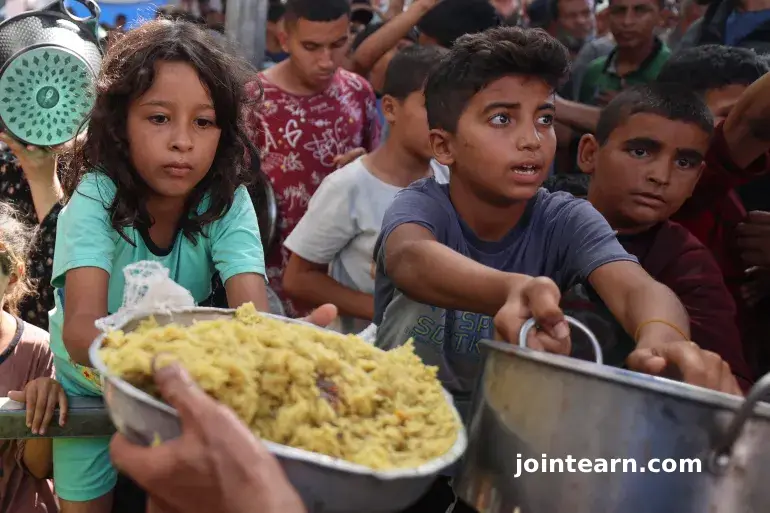
The ongoing humanitarian crisis in Gaza has reached alarming levels, with conflicting reports about the scale and effectiveness of aid entering the region. While the United States government emphasizes a significant increase in humanitarian assistance, Palestinians and relief organizations contend that the numbers are far below the urgent needs of the besieged population.
US Claims Historic Aid Effort in Gaza
According to the White House, nearly 15,000 trucks carrying commercial goods and humanitarian supplies have entered Gaza since the ceasefire between Israel and Hamas took effect on October 10, 2025. White House spokesperson Dylan Johnson told Al Jazeera that an average of 674 trucks per day have been allowed entry into the war-torn Strip.
Johnson highlighted that humanitarian workers have reached over one million people with household food parcels since October 10. He also noted that meal production in Gaza has surged by 82 percent since late September. Among other positive indicators, Johnson mentioned that eggs have appeared on store shelves for the first time since February, when Israel implemented a total blockade on humanitarian aid into Gaza.
“The United States is leading a historic effort to address the critical needs of Gazans right now,” Johnson said, adding that the Trump administration remains committed to treating Palestinians “with dignity and respect.”
Dire Conditions Persist on the Ground
Despite the White House’s statements, the reality in Gaza remains dire. The World Food Programme (WFP) reports that only 50 percent of the required food aid is currently reaching the population. Meanwhile, a coalition of Palestinian relief agencies has stated that total aid deliveries amount to just one-quarter of what was agreed upon in the ceasefire deal.
Scenes across Gaza show hungry children queuing for food at charity kitchens, particularly in refugee camps like Nuseirat in central Gaza, where basic nutrition is scarce. Families continue to struggle with severe shortages of food, clean water, medicine, and fuel.
Palestinians Accuse Israel of “Engineered Starvation”
Gaza’s Government Media Office reported that only 28 percent of the agreed-upon aid trucks have entered Gaza since the start of the ceasefire—totaling just 4,453 trucks, far below the promised 15,600. On average, only 171 trucks per day have been allowed, a fraction of the minimum 600 trucks daily needed to provide essential supplies such as food, medicine, cooking gas, and fuel.
The media office has accused Israel of “engineered starvation”, claiming that authorities have banned over 350 essential food items, including eggs, meat, cheese, vegetables, and nutritional supplements, while permitting low-value products like soft drinks, chocolate, and crisps sold at inflated prices. According to the press statement, these restrictions demonstrate “a deliberate policy of food manipulation used as a weapon against civilians.”
Humanitarian Access and Food Security: A Mixed Picture
While US-led efforts have reportedly delivered 17,000 cubic meters (4.5 million gallons) of drinking water daily, increasing water availability in northern Gaza by 130 percent in October alone, United Nations reports suggest that aid access remains highly uneven.
The United Nations Office for the Coordination of Humanitarian Affairs (OCHA) noted improvements in southern Gaza, where families are now able to eat two meals a day compared to just one in July. However, food security in northern Gaza remains catastrophic, and aid convoys are restricted to only two Israeli crossings.
UN spokesperson Farhan Haq emphasized that “people’s urgent needs are still immense,” despite the limited improvements. The WFP has called for the opening of all access points to allow large-scale deliveries of food and medical aid to the most affected regions of Gaza.
The Path Ahead: Urgent Need for Increased Aid
Although some progress has been made, humanitarian experts warn that the current scale of assistance is insufficient to meet the population’s needs. The White House stresses that this is “only the beginning” of the aid effort, while Palestinian authorities continue to call for immediate expansion of aid shipments and unrestricted access for relief agencies.
As the Gaza Strip faces its worst humanitarian crisis in decades, the international community is under pressure to ensure that food, medicine, and clean water reach those who need it most. Without urgent and sustained support, the risk of famine and widespread suffering in Gaza remains high.


Leave a Reply